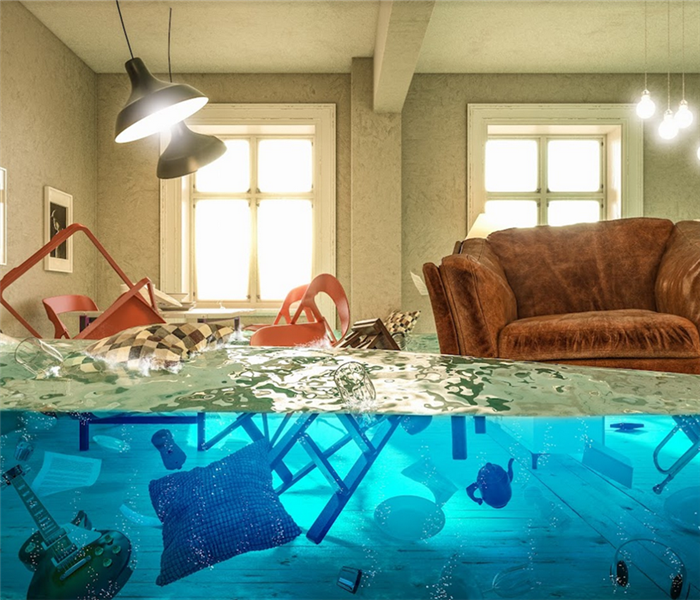Flood Damage Restoration in Durham Happens Fast with SERVPRO
2/27/2022 (Permalink)
 When flood damage affects your property, the situation can seem overwhelming. Contact SERVPRO for water removal and effective remediation services.
When flood damage affects your property, the situation can seem overwhelming. Contact SERVPRO for water removal and effective remediation services.
The SERVPRO Approach of Mitigating Flood Damage to Durham Properties
Mitigating flood damage to your Durham home involves much more than simply removing the floodwater. Professionals like SERVPRO can minimize the aftermath of a flood incident by taking prompt action and having an efficient restoration plan.
SERVPRO techs use industry-leading tools and techniques to get the flood damage to your Durham home under control in the shortest possible time. Once the techs establish a drying zone, they categorize the water damage into one of the following four classes:
- Class 1: If the water intrusion in wet, porous material represents less than ~5% of the combined floor, wall, and ceiling surface area.
- Class 2: If the water intrusion represents the total combined surface area between ~5% to 40%.
- Class 3: Wet porous material represents more than 40% of the combined surface area.
- Class 4: If deeply held bound water is present and a significant amount of water absorption has occurred into low evaporation materials (multilayer wallboard, multilayer subfloors, and other complex built-up assemblies)
Restoration strategy is consequently formulated depending on the class of water involved.
Types of water damage that SERVPRO techs encounter in Durham homes after a storm
SERVPRO techs encounter the following two types of water damage after a flooding incident at your Durham property:
- Primary damage: Results when materials come into direct contact with water. Delamination of carpets, swelling, and buckling of hardwood floors are examples of primary damage.
- Secondary damage: Results when materials are exposed indirectly to water. Secondary damage occurs when moisture evaporates into the air more quickly than moisture is being dehumidified from the air. Water absorption by hygroscopic materials and mold growth are examples of secondary damage.
Call SERVPRO of North Durham at (919) 467-0880 to discuss your restoration needs with one of our experts.

 24/7 Emergency Service
24/7 Emergency Service